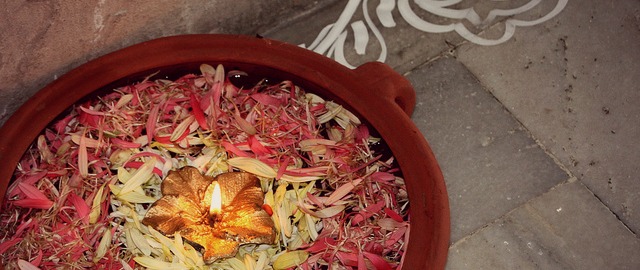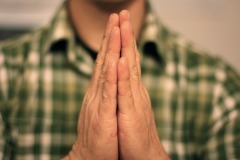
Indian Etiquette and Customs
If you are off to India whether on business or a recreational trip, there are certain general etiquette that most Indians are particular about. Although, some hosts might be accommodating and excuse any faux pas, but you can always score brownie points by adhering to these etiquettes and also avoid a few stink eyes in the process.
Greetings
- Indians hold their palms together and say
 ‘Namaste’ (nuh-mus-tay) while greeting each other. Hugging and kissing on the cheeks, especially with the opposite sex is frowned upon and should be avoided.
‘Namaste’ (nuh-mus-tay) while greeting each other. Hugging and kissing on the cheeks, especially with the opposite sex is frowned upon and should be avoided. - Take your shoes off before entering someone’s house or a place of worship – temples, mosques, gurudwaras.
- Do not comment on the Indian style of dressing. Their concept of formal wear might differ from yours; some people might prefer to wear a traditional kurta pyjama instead of a shirt & pants. Also, do not comment on women wearing a veil – whether it is the burqaa or hijaab in Muslims, or a ghunghat (head drape drawn till the chin) in Hindus.
- Another common gesture being the infamous bobbing of the head. A vertical nod indicates yes while a horizontal nod means no.
- Do not be offended if Indians simply consider you to be an ‘American’ or ‘Englishman’ irrespective of the country you are from. A lot of them tend to bucket foreigners into either one of these 2 categories.
Dining
- Do not refuse an informal invitation extended to you
 by your business associates or friends. Indians often invite guests to their home and give them a tour of the entire house including bedrooms, there’s no need to feel uncomfortable.
by your business associates or friends. Indians often invite guests to their home and give them a tour of the entire house including bedrooms, there’s no need to feel uncomfortable. - Bring along a gift by all means, but make sure it is not something expensive. Stick to sweets or chocolates if the gift in question isn’t a souvenir from your country. Even then it shouldn’t be something of great monetary value.
- Although the tradition of eating on the floor or a mat has changed, some households might still prefer to dine on the floor. Do not feel offended.
- Eat whatever has been offered to you, and when the host insists on a second helping say yes otherwise they assume you do not like the food.
- Keep in mind the major dietary restrictions when it comes to Hindus, Muslims, and Sikhs in India. Hindus consider cow scared and do not eat beef, Muslims eat beef but consider consumption of pork to be ‘haraam’ or a sin. Sikhs abstain from both beef and pork.
General
- Never talk about the Indian culture in a negative
 light, Indians are vehemently proud of their legacy and diverse culture. Also, refrain from getting into any religion-related topics; religion is a sensitive issue in the country.
light, Indians are vehemently proud of their legacy and diverse culture. Also, refrain from getting into any religion-related topics; religion is a sensitive issue in the country. - Public display of affection should be limited. While there has been a significant improvement in how Indians react to PDAs, the hugs and kisses are better left for a more inconspicuous opportunity.
- Dress appropriately no matter if you are off for an official meeting or a casual stroll. Refrain from wearing extremely figure-hugging or skin-baring clothes. Indians would be utterly impressed if you choose to go traditional and wear kurta pyjama (for men) or Salwar Kameez/Saree (for women), they see this as a gesture of friendship.
- Do not expect business meetings to start on time. In India punctuality could easily be translated to mean half an hour to one hour late.
- Expect to be a part of incessant small talks from the weather to the political conditions back at your country. Answer politely or simply smile.
Indian etiquette might insinuate an overall strict, formal code of conduct but in reality it is a lot accommodating and lenient. When your Indian friends ask you to ‘drop in at any time’ they are not saying just for the sake of being polite, and don’t be surprised if they drop in at any time to meet you.
Recommended Reading
CultureShock! India: A Survival Guide to Customs and Etiquette

 ‘Namaste’ (nuh-mus-tay) while greeting each other. Hugging and kissing on the cheeks, especially with the opposite sex is frowned upon and should be avoided.
‘Namaste’ (nuh-mus-tay) while greeting each other. Hugging and kissing on the cheeks, especially with the opposite sex is frowned upon and should be avoided. by your business associates or friends. Indians often invite guests to their home and give them a tour of the entire house including bedrooms, there’s no need to feel uncomfortable.
by your business associates or friends. Indians often invite guests to their home and give them a tour of the entire house including bedrooms, there’s no need to feel uncomfortable. light, Indians are vehemently proud of their legacy and diverse culture. Also, refrain from getting into any religion-related topics; religion is a sensitive issue in the country.
light, Indians are vehemently proud of their legacy and diverse culture. Also, refrain from getting into any religion-related topics; religion is a sensitive issue in the country.
No comments yet.